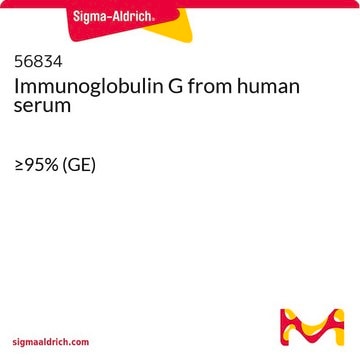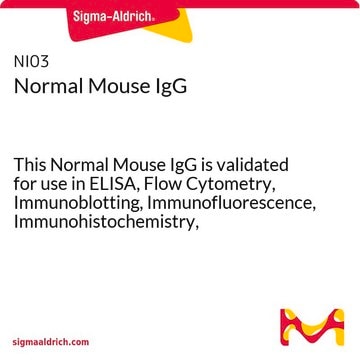I8765
IgG from mouse serum
technical grade, ≥80% (SDS-PAGE), buffered aqueous solution
Sinónimos:
Mouse IgG
About This Item
Productos recomendados
conjugate
unconjugated
grade
technical grade
assay
≥80% (SDS-PAGE)
form
buffered aqueous solution
technique(s)
ChIP: suitable
immunohistochemistry: suitable
shipped in
dry ice
storage temp.
−20°C
¿Está buscando productos similares? Visita Guía de comparación de productos
General description
IgG from mouse serum specifically recognizes IgG from mouse. Mouse IgG is purified from normal mouse serum by fractionation.
Application
Biochem/physiol Actions
Physical form
Disclaimer
Storage Class
12 - Non Combustible Liquids
wgk_germany
nwg
flash_point_f
Not applicable
flash_point_c
Not applicable
Certificados de análisis (COA)
Busque Certificados de análisis (COA) introduciendo el número de lote del producto. Los números de lote se encuentran en la etiqueta del producto después de las palabras «Lot» o «Batch»
¿Ya tiene este producto?
Encuentre la documentación para los productos que ha comprado recientemente en la Biblioteca de documentos.
Nuestro equipo de científicos tiene experiencia en todas las áreas de investigación: Ciencias de la vida, Ciencia de los materiales, Síntesis química, Cromatografía, Analítica y muchas otras.
Póngase en contacto con el Servicio técnico







